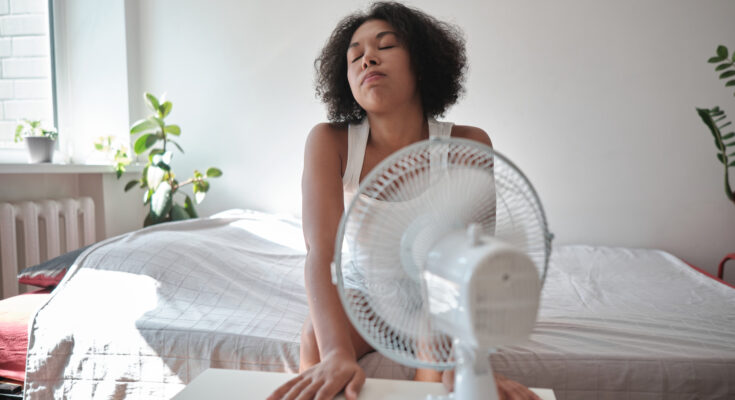Here’s Why One Room In Your Home Is Always Much Hotter Than The Others
Whether you live in an apartment or a single-family home, there always seems to be that one room that’s significantly hotter than the rest — especially at bedtime, right? Even when you crank the thermostat down low enough to cool the entire place, that one room still feels warmer than the others. But why? Turns out, this is a pretty common issue and an even more common question discussed on forum sites like Reddit and Quora. And from what people have shared, there are actually some valid explanations behind this little phenomenon.
A common culprit behind uneven room temperatures is window size and placement in relation to the sun. Rooms with large windows that face the direction of the sunrise or sunset tend to take in more direct light throughout the day, which causes the room to soak up more heat, even in cooler weather. And that might not be the only factor working against you. If the window seal is damaged (here’s a guide on how much it will cost to replace) or the weatherstripping is worn out or missing, warm air can easily get into your home. Between the sun exposure and poor insulation, it becomes especially difficult for that one room to stay cool.
Insulation and HVAC system issues can also cause one room to be hotter
Insulation is designed to help regulate heat throughout your home, keeping it in during the winter and out during the summer. But if it’s loosely packed, isn’t thick enough, or has gaps, it probably has a lower R-value, which is a rating of its effectiveness. If your insulation isn’t working as it should, it can also cause one room to stay warmer than the others.
Having one room that is consistently hotter than the rest might also be a warning sign that your HVAC system is experiencing issues. One thing you can do is determine if your unit is properly sized for your home by having an HVAC specialist or local utility company perform a Manual J calculation. This should give you a clear picture of the size you need. For reference, a 3- to 4-ton AC unit is typically required to cool a home around 2,000 square feet. So essentially, a smaller home would require a smaller unit, and vice versa.
Damaged or worn HVAC ductwork can also be behind the whole “one room is hotter than the rest” scenario. Heating and cooling systems rely on ducts (i.e., tubes that funnel warm or cool air throughout the house and help maintain the overall temperature). But ductwork has a limited lifespan and will likely need to be replaced every 10 to 15 years. If it isn’t old, it could be damaged, maybe even leaking from a crack. Improperly installed ductwork can also affect your system’s performance and may be preventing consistent temperatures throughout the house.
Dirty air filters and closed-off vents can also impact air flow
Perhaps one of the more common reasons why one room feels hotter than the others is a dirty air filter. Thankfully, they are affordable and easy to replace. Air filters are designed to catch dust and debris circulating through your home, preventing it from entering the air you breathe. But when they become clogged, it can impact your HVAC system’s ability to perform efficiently, causing certain parts of your home to feel warmer than others. Most air filters should bereplaced about every three months, though some types need to be swapped out as often as every 30 days or less. It’s also worth noting that keeping an air vent closed in one room could actually be putting strain on your overall cooling system instead of redirecting airflow.
While those are some of the more common culprits, there can also be more specific issues, some of which homeowners have shared on online forums. For instance, if your home has multiple stories and the room that stays hot is located on the top floor, it could be because it’s closer to the sun. And as simple science tells us, warm air rises. One Reddit user mentioned experiencing major temperature fluctuations and eventually discovered that the heat pump in their attic wasn’t fully connected to the ductwork leading to the rest of the house, which disrupted the airflow entirely. So if replacing your air filter or hanging some sun-blocking curtains doesn’t do the trick, it may be time to call in a professional to assess your insulation and ductwork.
